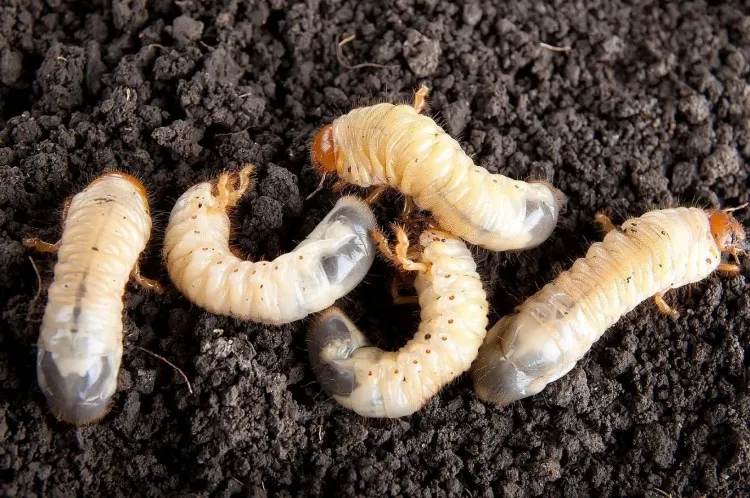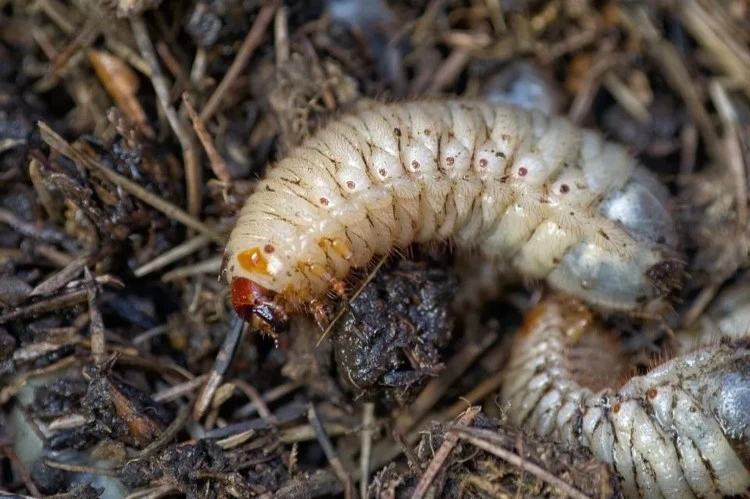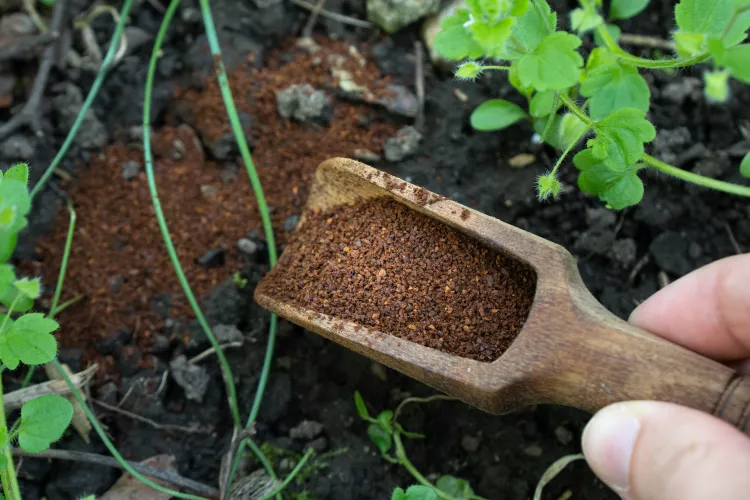First of all: grubs is a collective term for caterpillars of various beetles. Some species of insects are useful for the garden, but there are also pests. We explain how you can recognize them and which remedies are particularly helpful in the event of an infestation.
Recognizing grubs in the raised bed: May beetle and June beetle larvae are pests
The grubs may look similar to inexperienced home gardeners, but they are often completely different species. The caterpillars of the rose chafer and the rhinoceros beetle are considered beneficial because they eat rotting and dead plant parts. The first process the fallen leaves and yellowed shoots into compost material, the second feed exclusively on rotting wood and can be found in mulch.
However, if you see grubs in the raised bed between the plants, then it is mostly the larvae of the May beetle and June beetle. They eat the roots and leaves of plants and are considered pests. But how can you recognize them?
May beetle grubs and June beetles look very similar. They are white but have a brown head and a body 3 to 5 cm long. You can see them directly on the plants or you can also find them in the soil in the root area. A sure sign that it is the pests are eaten leaves and damaged roots. They are found much more frequently in flower beds, raised beds and flower pots than beneficial insects.
Where do grubs come from in raised beds?

The grubs get into the raised bed in different ways. They are mostly towed with the compost. The pests often lay their eggs in the raised bed – these then go unnoticed over the winter and the next spring the grubs come out of the ground. In this case, quick action cannot help, because the number of larvae is actually constant. Even if the first ones are successfully fought, the next ones will hatch after a while.
Nevertheless, we recommend that you control or relocate the pests. Otherwise the plants can die. Fortunately, there are some remedies that are proving to be very effective in fighting the larvae.
Is calcium cyanamide effective against grubs?
When it comes to calcium cyanamide against grubs, opinions differ. Many hobby gardeners swear by it and have had positive experiences with the calcium cyanamide approach. It is said to be poisonous to grubs and also to sterilize the soil. It is best to work some lime into the compost and then apply it to the raised bed. The soil should be fresh for this purpose – it is best to apply the compost and calcium cyanamide mixture after you have watered the plants.
Nematodes help in the fight against cockchafer larvae

Nematodes can also be used successfully in the fight against May beetle larvae. The tiny little worms can be found in every garden center. These are added to the irrigation water and then go straight into the ground, where they can fight the grubs. This variant is environmentally friendly and very effective as long as you follow the manufacturer’s instructions.
Garlic against grubs in the ground
Have you noticed grubs in the ground? Plant garlic between the affected plants. The roots of the crop are poisonous to insects. But the smell of the garlic can also drive them out of the raised bed permanently or prevent another infestation.
Add coffee grounds to the compost and drive away the larvae

The larvae are often transported to the raised bed with the compost. To prevent this, add coffee grounds to the compost. May beetles and June beetles do not like coffee grounds and try to avoid them. Of course, this is not a rule of thumb – you can bring a few specimens into the raised bed with the compost from time to time, but the number of pests is kept within limits.
More eco-friendly ways to get rid of grubs
relocate: If you are not sure whether the grubs in the raised bed are useful or harmful, you can simply relocate them. To do this, simply change the soil in the raised bed (before spring planting).
Collect: You can also collect the grubs. To do this, simply water the raised bed vigorously and then wait. After about a quarter of an hour they will appear on the surface. You can then simply collect and relocate them.
Umgraben: In principle, you can also dig up the earth. While this is effective against the pests because they will show up on the surface. But by doing so, you will destroy the layers in the soil – which could harm the plants.